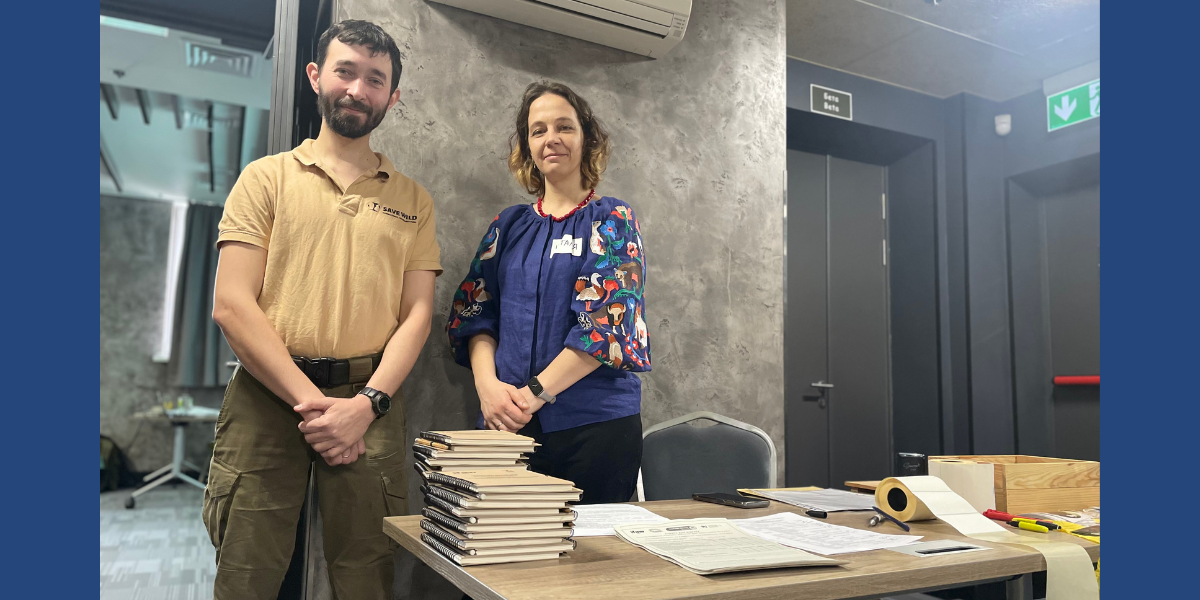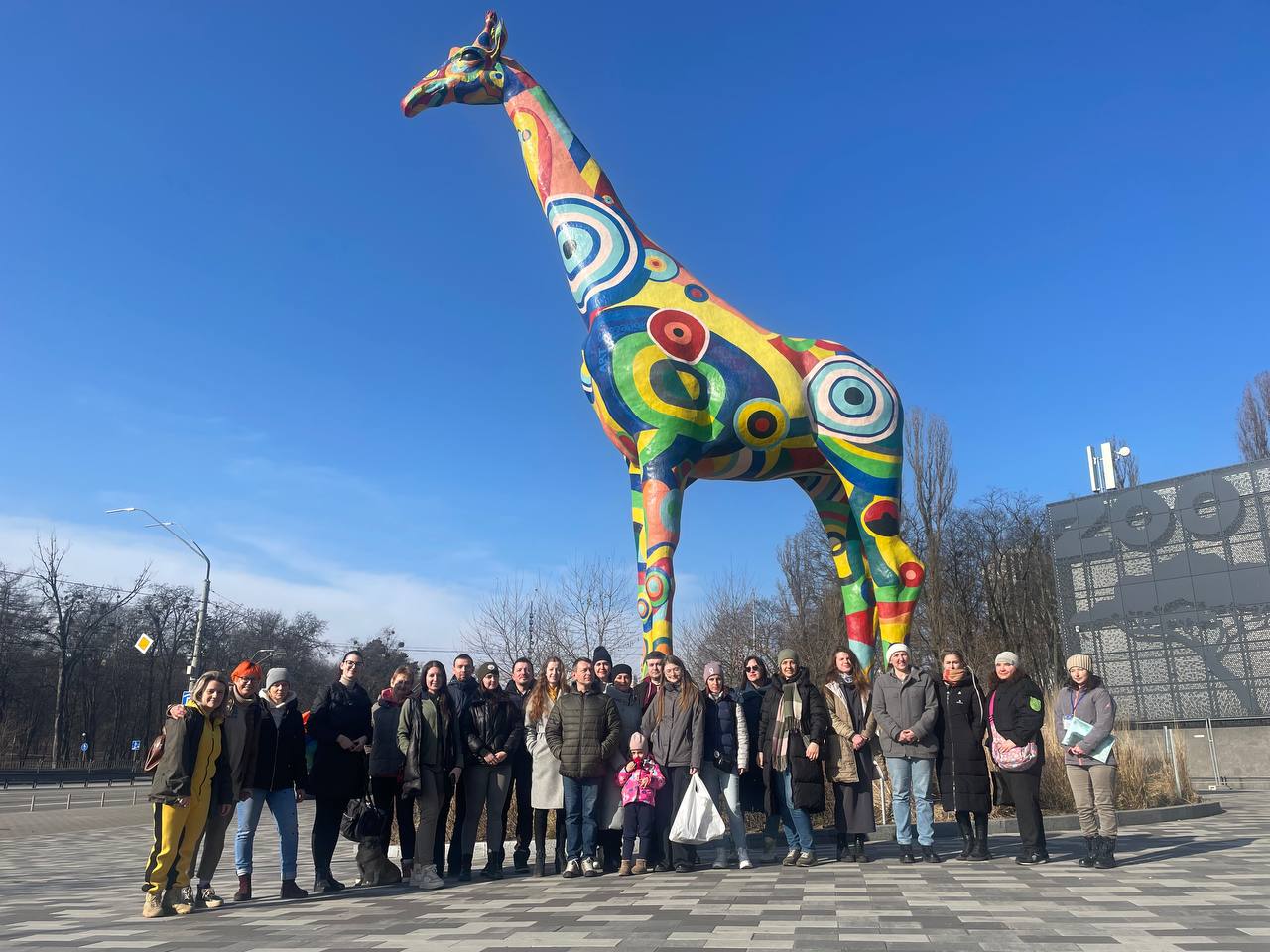On the front lines of animal welfare
Wildlife rehabilitation guide funded by Minnesota-based Partners for Wildlife initiative translated and finding use in Ukraine

Wildlife rehabilitation guide funded by Minnesota-based Partners for Wildlife initiative translated and finding use in Ukraine
Natalia Gozak (right) is among Ukraine's wildlife rehabilitators continuing her work of helping animals as war devastates the country.
On a Monday morning in late March, Natalia Gozak was chatting with colleagues over a video call when the air suddenly filled with explosions.
“At that exact moment, I was discussing the topic of financial reporting with a hedgehog rehabilitation team,” Gozak says. “And then they said, ‘You know, it's the first time in my life I'm doing financial reporting to a donor, and it's under a shelling.”
Gozak is a wildlife rescue officer for the International Fund for Animal Welfare (IFAW), who lives in Kyiv, Ukraine. Since the Russian full-scale invasion of Ukraine began in February 2022, she and other wildlife rehabilitators in the country have continued their work with the war as their backdrop. In that time, IFAW and its partners have helped more than 165,000 animals.
Rescuing animals amid volatility created by the conflict comes with challenges, but rehabilitators have a new tool in the form of a written guide that can help them provide care to the animals they encounter.
In March 2024, the Ukrainian edition of the book “Standards for Wildlife Rehabilitation”—its first translation from English into another language—debuted at the “Rescue and Rehabilitation of Wild Animals in Ukraine” conference. The book represents nearly a year of international collaboration, including six months of translation work implemented by the Ukrainian Save Wild team.

“Standards” is a book published in 2021 through the collaboration of the International Wildlife Rehabilitation Council (IWRC) and the National Wildlife Rehabilitators Association (NWRA) with funding support from the Partners for Wildlife program facilitated by The Raptor Center at the University of Minnesota (UMN).
“We're always looking for ways to help,” says Gail Buhl, partnership coordinator at Partners for Wildlife. “How can we assist? How can we do things that benefit our service area but also benefit everybody in wildlife rehabilitation? That’s our hope for ‘Standards for Wildlife Rehabilitation.’”
Wildlife rehabilitation in Ukraine and throughout the world often relies on grassroots networks of individuals and nonprofits rather than government-led systems. A resource like “Standards” that establishes baselines and recommendations for care across numerous topics and animal species can be invaluable for rehabilitators of any level, according to IWRC Director Kai Williams.
“I go back to when I was a young rehabilitator in Wisconsin doing songbird rehabilitation,” Williams says. “There were so many times where I kind of reinvented the wheel for myself in some ways. If I'd had access to a broader network and more resources like ‘Standards’ I wouldn't have had to. It's so important for animal welfare that we communicate knowledge with each other, whether we're in rural Wisconsin or in Ukraine.”
In Ukraine, Gozak estimates that there are around 50 known wildlife rehabilitation initiatives. Most are small private groups of two or three individuals. Some are families housing animals in their yards or people keeping them in apartments—anything they can do to assist animals amid the turmoil.
Wildlife rehabilitators aren’t the only ones in the country trying to help wild animals or exotic pets left behind by refugees fleeing the country.
“There is a certain amount of wild animals rescued by military people from the front line, who have absolutely no idea what to do with a young owl or an exotic ferret,” she says. “They just try to rescue it and then look for the wild animal shelters. And they cannot do it quickly because they are really on the front lines. It takes weeks sometimes.”
While it’s too early to gauge “Standards” impact on wildlife rehabilitation in Ukraine, Gozak and others have integrated it into their work. Though written from a North American perspective in terms of species and other topics, Williams says she’s excited that Ukrainian groups have found value in the book.
“This book is not just about this caging for this species or food for that species,” she says. “It's about those underlying standards of what's good welfare, what's good practice. And there's a lot of tools in the book that people can use to understand that even if they have a species that is very novel to them.”
“Standards” is a successor to the 2012 edition of the book “Minimum Standards for Wildlife Rehabilitation”—first published in 1989. A key difference between the two books is an expanded focus on animal welfare in “Standards for Wildlife Rehabilitation.”
Its inclusion hits at the heart of Partners for Wildlife’s mission, which is dedicated to improving animal welfare in wildlife rehabilitation across a seven-state region in the U.S. through building capacity, community, and competency.
“NWRA, IWRC, and Partners for Wildlife wanted to make sure this publication talked about animal welfare by introducing the concepts in every lens that you would look at animals coming in for care in wildlife rehabilitation,” Buhl says. “That’s the food, that's the cages, that's how you make sure that animals stay safe from diseases that another wild animal might bring into your facility—all of those different levels.”
“Standards for Wildlife Rehabilitation” is available as a free online publication to active members of NWRA or IWRC. The book also is available for purchase in print and e-versions. While the book is a helpful resource, wildlife rehabilitation—particularly in the United States—often involves acquiring the appropriate licenses, permits, and training. In the United States, permits and licenses are issued at the federal, state, and occasionally local levels, and potential rehabilitators must educate themselves on what they would need to operate legally in their respective municipality.